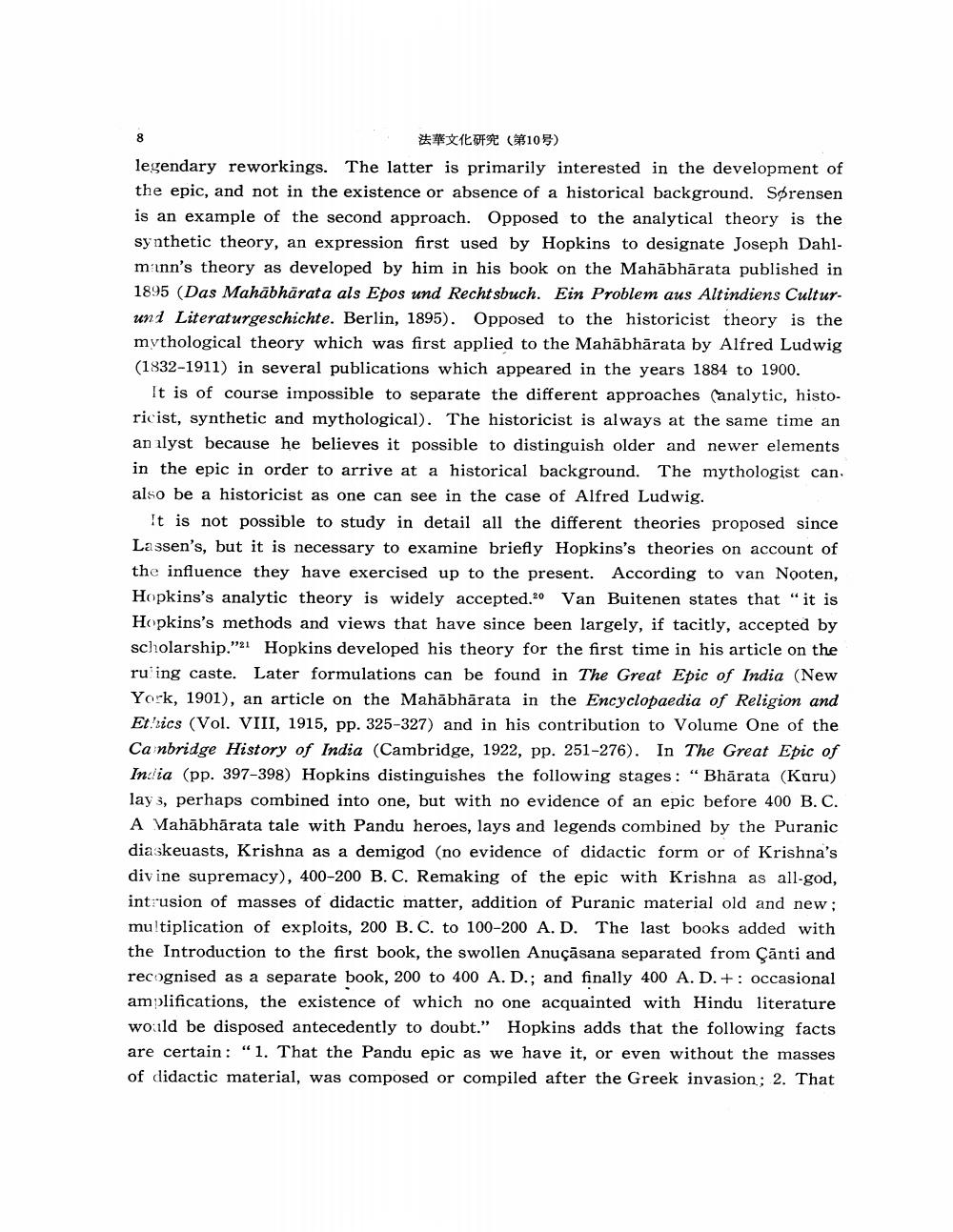Book Title: Study Of Mahabharata Author(s): J W De Jong Publisher: J W De Jong View full book textPage 8
________________ ***ILM# 105) legendary reworkings. The latter is primarily interested in the development of the epic, and not in the existence or absence of a historical background. Sørensen is an example of the second approach. Opposed to the analytical theory is the synthetic theory, an expression first used by Hopkins to designate Joseph Dahlminn's theory as developed by him in his book on the Mahābhārata published in 1895 (Das Mahābhārat a als Epos und Rechtsbuch. Ein Problem aus Altindiens Culturund Literaturgeschichte. Berlin, 1895). Opposed to the historicist theory is the mythological theory which was first applied to the Mahābhārata by Alfred Ludwig (1832-1911) in several publications which appeared in the years 1884 to 1900. It is of course impossible to separate the different approaches (analytic, historicist, synthetic and mythological). The historicist is always at the same time an an ilyst because he believes it possible to distinguish older and newer elements in the epic in order to arrive at a historical background. The mythologist can. also be a historicist as one can see in the case of Alfred Ludwig. It is not possible to study in detail all the different theories proposed since Lassen's, but it is necessary to examine briefly Hopkins's theories on account of the influence they have exercised up to the present. According to van Nooten, Hopkins's analytic theory is widely accepted.20 Van Buitenen states that "it is Hopkins's methods and views that have since been largely, if tacitly, accepted by scholarship."1 Hopkins developed his theory for the first time in his article on the ru ing caste. Later formulations can be found in The Great Epic of India (New York, 1901), an article on the Mahābhārata in the Encyclopaedia of Religion and EtPrics (Vol. VIII, 1915, pp. 325-327) and in his contribution to Volume One of the Ca nbridge History of India (Cambridge, 1922, pp. 251-276). In The Great Epic of India (pp. 397-398) Hopkins distinguishes the following stages : “Bhārata (Kuru) lay 3, perhaps combined into one, but with no evidence of an epic before 400 B.C. A Mahābhārata tale with Pandu heroes, lays and legends combined by the Puranic diaskeuasts, Krishna as a demigod (no evidence of didactic form or of Krishna's divine supremacy), 400-200 B.C. Remaking of the epic with Krishna as all-god, intrusion of masses of didactic matter, addition of Puranic material old and new; multiplication of exploits, 200 B. C. to 100-200 A. D. The last books added with the Introduction to the first book, the swollen Anuçāsana separated from Çānti and recognised as a separate book, 200 to 400 A.D.; and finally 400 A. D. +: occasional amplifications, the existence of which no one acquainted with Hindu literature would be disposed antecedently to doubt." Hopkins adds that the following facts are certain : "1. That the Pandu epic as we have it, or even without the masses of didactic material, was composed or compiled after the Greek invasion; 2. ThatPage Navigation
1 ... 6 7 8 9 10 11 12 13 14 15 16 17 18 19
